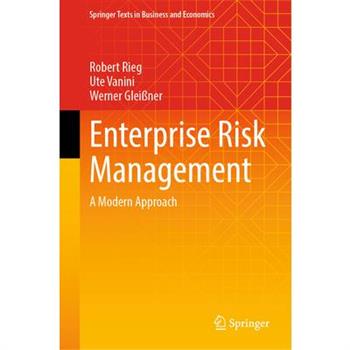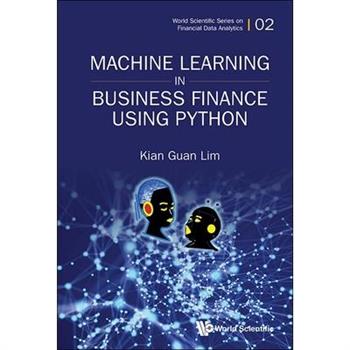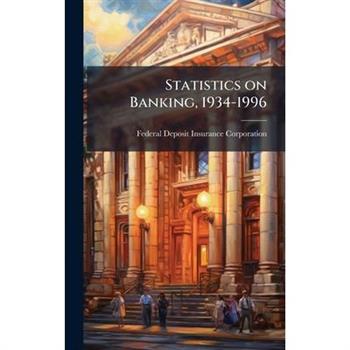Banker's Almanac And Register And Legal Directory
Banker's Almanac And Register And Legal Directory
Handbook of Model Risk Management for Vendors
Transform a Model Validation Burden into a Competitive Advantage The Game-Changing Reality: Effective model risk management isn't just about compliance-it's about becoming the vendor banks prefer to work with. When your Model Risk Committee operates with the same rigour as your banking clients', you shift from being questioned to being trusted from being a supplier to being a strategic partner. Your Competitive Edge: Whilst your competitors scramble to answer endless validation questions, you'll be the vendor that banking clients turn to first. Strong governance capabilities create deeper relationships, smoother sales cycles, and natural protection against competitive threats. Beyond Banking - Universal Value: Model risk governance delivers operational excellence that benefits all clients, not just banks. In an era of unprecedented technological change and market volatility, providing genuine assurance about your analytical capabilities creates trust across every sector. Insurance firms, asset managers, corporates, and government agencies all value vendors who can demonstrate systematic oversight of their quantitative methods. The Ultimate Truth: In a market flooded with sophisticated models, the winner is the vendor all clients can trust to manage the risks those models create. Your governance framework becomes a powerful competitive moat that delivers operational reliability when uncertainty is the only constant. Proven Implementation Roadmap: This handbook provides battle-tested templates, practical workflows, and real-world insights from successfully transforming vendor-client relationships. Drawing on decades of experience implementing model governance across global institutions, it delivers a 12-week implementation plan that turns regulatory panic into competitive advantage. You'll get the exact Model Risk Committee terms of reference, documentation templates, and RACI frameworks that have proven successful with major banking clients. Reset All Your Client Relationships: Learn how to proactively demonstrate governance maturity rather than reactively respond to validation demands. You transform from a technology supplier into a trusted analytical partner when you can show clients that you understand model limitations, monitor performance systematically, and manage risks transparently. David K Kelly brings three decades of hard-won experience from the front lines of global investment banking, where he's witnessed firsthand how model failures can devastate institutions and how robust governance frameworks can prevent catastrophe. As a seasoned professional who has held senior leadership positions in both front office and risk departments at global systemically important banks, David understands the unique pressures facing both model developers and validators. David provides invaluable insight into the vendor perspective-the challenges of building sophisticated analytical solutions while satisfying increasingly demanding governance requirements. David has spent his career implementing advanced modelling solutions for capital requirements under evolving regulatory frameworks, making him uniquely qualified to bridge the gap between theoretical compliance and practical implementation. This handbook distils decades of lessons learned from both spectacular failures and quiet successes in model risk management. The result is a practical roadmap that transforms regulatory burden into competitive advantage-because in a world where everyone claims to have the best models, the winner is the vendor clients can trust to manage the risks those models create. Turn your greatest regulatory challenge into your most valuable business asset.
Machine Learning in Business Finance Using Python
This book is an introduction to machine learning using Python programming language with applications in finance and business. Coverages include the prediction methods of logistic regression, Na簿ve Bayes, k-Nearest Neighbor, Support Vector Machine, Random Forest, Gradient Boosting, and various types of Neural Networks. Performance measurements and assessments of feature importance are also explained. The book also contains detailed examples of the applications with data. Python codes are explained in a step-by-step manner using Jupyter Notebook so that the readers can practise on their own.
A Taxing Journey
This open access book examines how civic organizations can influence tax policy and administration in ways that benefit ordinary citizens, through in-depth case studies from a wide range of countries including France, Guatemala, Kenya, Mexico, Philippines, Uganda, and the United States. These cases demonstrate the ways in which civic coalitions have crafted convincing narratives and used creative strategies to change the political incentives of policymakers and yield more equitable tax reform. The cases cover a wide range of types of tax reform, from taxes on specific items like fuel, tobacco and mobile money applications, to personal and corporate income taxes. They also highlight the use of a variety of approaches by civic actors-such as media campaigns, advocacy with legislators, and strategic litigation-to influence policy. These examples, covering a range of lower and higher income countries, across many aspects of tax systems, give us useful examples to build on, demonstrating that citizens everywhere can influence tax policy and ultimately secure fairer societies. The ebook editions of this book are available open access under a CC BY 4.0 licence on www.bloomsburycollections.com.
Empirical Asset Pricing
An introduction to the theory and methods of empirical asset pricing, integrating classical foundations with recent developments. This book offers a comprehensive advanced introduction to asset pricing, the study of models for the prices and returns of various securities. The focus is empirical, emphasizing how the models relate to the data. The book offers a uniquely integrated treatment, combining classical foundations with more recent developments in the literature and relating some of the material to applications in investment management. It covers the theory of empirical asset pricing, the main empirical methods, and a range of applied topics. The book introduces the theory of empirical asset pricing through three main paradigms: mean variance analysis, stochastic discount factors, and beta pricing models. It describes empirical methods, beginning with the generalized method of moments (GMM) and viewing other methods as special cases of GMM; offers a comprehensive review of fund performance evaluation; and presents selected applied topics, including a substantial chapter on predictability in asset markets that covers predicting the level of returns, volatility and higher moments, and predicting cross-sectional differences in returns. Other chapters cover production-based asset pricing, long-run risk models, the Campbell-Shiller approximation, the debate on covariance versus characteristics, and the relation of volatility to the cross-section of stock returns. An extensive reference section captures the current state of the field. The book is intended for use by graduate students in finance and economics; it can also serve as a reference for professionals.




















































